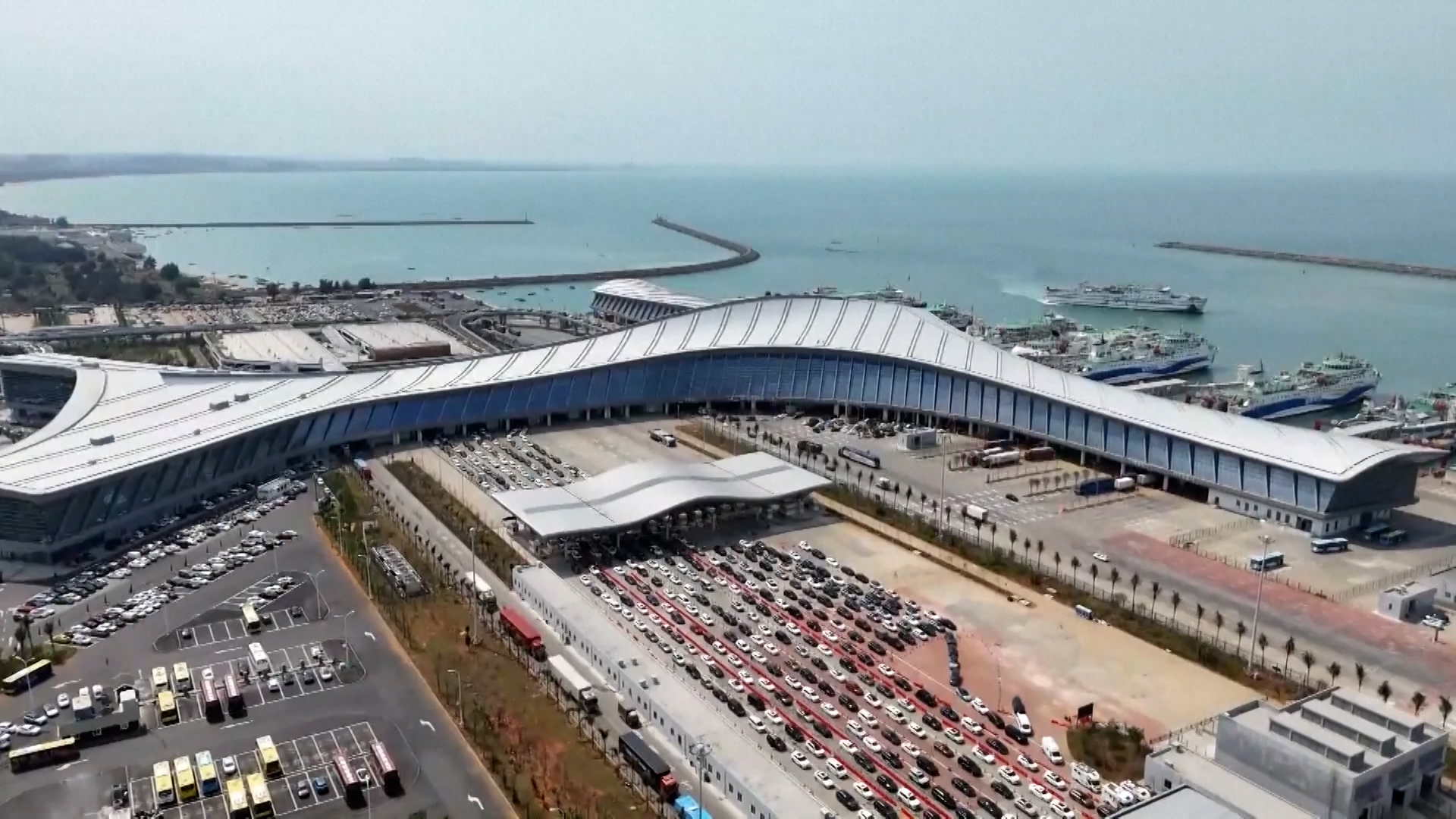China's Anti-Terrorism Leadership; Sino-Afghan Bonds and Belt Initiatives; Governance, Progress in Tibet; AI Ethics Amid Global Strategies; Tesla's Regional Focus
China's Call for Unified Anti-Terror Efforts
In a recent speech at the United Nations, China's Deputy Permanent Representative, Geng Shuang, emphasized the need for the international community to overcome ideological prejudices and geopolitical calculations in fighting terrorism. Describing terrorism as a threat to humanity, Geng highlighted the global spread and increasing intensity of attacks, particularly noting the activities of groups like the 'Islamic State' in regions such as Afghanistan and Southeast Asia. He urged for a united front, free from bias, to combat terrorism effectively. Geng's comments also touched on China's tentative support for banning 'Tehrik-i-Taliban Pakistan' as a step towards increased cooperation against terror groups. The underlying narrative here seems to be China's positioning itself as a global leader in the fight against terrorism (source).
Strengthening Sino-Afghan Relations
The relationship between China and Afghanistan was reaffirmed during a meeting between Afghan Prime Minister Mohammed Hassan Akhund and Chinese Foreign Minister Wang Yi. Afghanistan expressed gratitude for China's long-standing support and goodwill, highlighting historical alignments and cooperative agendas against external interventions. This dialogue underscores Afghanistan's desire to solidify ties with China as it navigates challenges post-U.S. withdrawal. Such narratives reflect China's strategic diplomatic engagements in South Asia, aiming to expand its influence by fostering regional partnerships that emphasize mutual respect and non-interference. China's charm offensive seems part of a broader effort to stabilize its western frontier and counter Western narratives about its intentions (source).
China-Afghanistan-Bahrain Triangular Diplomatic Talks
The sixth China-Afghanistan-Bahrain trilateral discussion, held in Kabul, focused on deepening political, economic, and security cooperation among the three nations. Highlighted by China's proposal, these talks signify an evolving tripartite partnership aimed at boosting regional stability and economic growth. Chinese Foreign Minister Wang Yi reiterated the importance of respecting core interests and non-interference, stressing the need for cooperation to counter international terrorism like 'Eastern Turkistan Islamic Movement'. These discussions are indicative of China's strategy to build robust regional alliances, particularly as it seeks to play a pivotal role in reconstructing Afghanistan politically and economically after decades of conflict (source) (source).
The meeting further underscored China’s commitment to enhancing logistical and trade cooperation, aiming to integrate regional economies. Such initiatives reflect China's broader Belt and Road Initiative, promoting interconnectivity while strategically addressing geopolitical tensions. The engagement is also part of a narrative presenting China as a stabilizing force in volatile regions, opposing unilateral approaches from Western powers that it argues often lead to instability (source).
The Role of Governance in Chinese Society
The article from Sina reflects on the importance of '法度' (legalism) in China's governance. The text draws on classical Chinese references to emphasize the necessity of law and moral discipline as foundational to social stability and personal integrity. By highlighting stories like that of the Song Dynasty official 子罕, who refused a jade gift to maintain his ethical principles, the article underscores that adherence to legal and moral standards spawns personal contentment and societal well-being. This narrative aligns with the Chinese government’s push for rule of law and anti-corruption measures, aiming to assure citizens of the righteousness and capability of governance systems.
Cultural and Modernization Efforts in Tibet
Multiple articles from Sina focus on Xi Jinping's visit to Tibet and the celebrations for the 60th anniversary of the region's establishment. The articles emphasize rapid economic and social progress, such as infrastructure development and improved quality of life for residents. There is notable praise for cultural integration efforts, like bilingual education and fostering ethnic unity. These initiatives are not just internal affairs; they reflect China's broader strategy to present itself as a harmonious, modern nation. Internationally, such portrayals can be aimed at countering criticism on issues like Tibet's human rights while promoting China as an example of peaceful development.
Furthermore, the narrative of technological progress is aligned with fostering a collective spirit among China's diverse ethnic groups, where traditional culture and modernity intersect with the state's guiding support. Tibet is presented not only as a historical and cultural treasure but also as a cornerstone of socialist modernization.
International Relations and Strategic Absences
The report from RFI highlights a significant diplomatic move where South Korean President Lee Jae-myung will not attend a commemorative event in China. Instead, a delegation led by National Assembly Speaker Kim Yun-sik will represent South Korea. This incident reflects the intricate diplomacies in the Asia-Pacific region, where South Korea balances its relationships with China, a significant trading partner, and Japan, its historical and current ally, particularly under the prism of U.S. influence. The strategic absence of President Lee aligns with South Korea’s attempts to maintain diplomatic equilibrium amid rising regional tensions and asserting influence by reinforcing alliances with both neighboring and global powers.
Technological Empowerment in Remote Regions
An article from Sina discusses China's significant efforts in technological outreach to rural and border areas. This piece expounds on the deployment of 5G networks and smart management systems in regions like Guangxi, demonstrating China's commitment to overcoming geographical barriers through technology. This extends not only telecommunication access but also enhances tourism experiences and local economies by implementing digital infrastructure. Such advancements point to China's targets for creating ‘digital villages’ as part of its broader policy of rural revitalization and technological modernization, reflecting national goals for a 'Digital China' and contributing to global narratives of technological leadership.
The technological transformation of these rural addresses showcases China’s capacity to bridge the gap between urban and rural, traditional and modern, while boosting local GDP through enhanced connectivity – a point not missed by international observers tracking China's scientific innovation and socio-economic initiatives.
Government Policies and AI Evolution
A key theme emerging from today's stories is the strategic planning by governmental bodies to harness AI for national growth. For example, sources like CCTimes discuss the Chinese government's new regulations encouraging AI-driven infrastructure development, highlighting the intention to integrate AI into urban planning. This initiative is not just about technological advancement; it's about using AI as a cornerstone for sustainable urbanization, reflecting China's broader ambition to position itself as a global leader in AI technology.
Another article from The People's Daily amplifies this by delving into specific governmental grants being offered to AI startups. These articles collectively underscore a narrative focused on governmental support as a catalyst for innovation. Through state-backed initiatives, the aim is clear: foster homegrown talents that can compete on the international stage, further solidifying AI's role as a pillar of economic strategy.
Technological Advancements and Industry Innovation
In contrast to the policy-driven discourse, several stories from technical publications such as the China Tech Daily shift focus toward groundbreaking advancements in AI research and development. One article highlights a collaboration between leading tech universities and enterprises to develop neural networks capable of self-improvement, thereby enhancing machine learning efficiency. By showcasing specific breakthroughs, like the development of algorithms that can process data with unprecedented speed, these stories emphasize the technical prowess and global competitiveness of Chinese AI research.
Such stories not only highlight domestic developments but also place them in the context of global innovation races. For instance, when juxtaposed with snippets from Western tech analyses, it becomes evident that China’s strategic collaborations are aimed at catching up or even surpassing developments from AI giants in Silicon Valley. This reflects a broader trend of moving from imitation to innovation, fostering a narrative of scientific and technological ascendancy.
Ethics and AI: Navigating the Moral Dilemmas
On another front, ethical considerations are coming to the fore. A thoughtful piece in The Global Times brings attention to how AI's rapid adoption is sparking debates around digital ethics and privacy. The article discusses scenarios where new AI tools have blurred the lines between surveillance and security, leading to public discourse about privacy rights and the moral obligations of tech developers. This highlights a growing awareness and need for comprehensive ethical frameworks that guide AI deployment.
Such discussions are critical on a global scale, as every major tech hub grapples with similar issues. The divergence in how these ethical concerns are approached—whether through stringent laws in the EU or more market-driven solutions in the US—points to differing societal values and emphasizes the balance between innovation and regulation. China's increasing openness to debate these topics suggests a shift toward a more balanced view of technological progress.
As the AI landscape continues to evolve, these narratives collectively paint a picture of vibrant technological growth tempered by strategic foresight and ethical introspection. Each regional and industry-specific discussion not only defines present capabilities and challenges but also sets the stage for future developments. The stories from China serve as both a mirror and a window—reflecting internal ambitions while offering insights into the globalized journey of AI advancement.
Tesla's Model Y Launch in China and Implications for the U.S. Market
The latest development from Sina Finance reveals intriguing insights into Tesla's strategic maneuvers regarding the Model Y. The Shanghai-manufactured, extended-wheelbase, six-seater Model Y launched in China is unlikely to be produced in the United States. Marked at approximately $47,200, this variant aims to capture a growing segment in China's burgeoning auto market while highlighting Tesla's cautious approach towards the American autonomous vehicle segment.
Elon Musk, Tesla's CEO, conveys some uncertainty about the U.S. production of this vehicle variant, hinting at an indefinite postponement that might coincide with the advent of autonomous driving technologies. According to the report, Tesla's focus on indigenizing production for specific markets underscores a strategic pivot towards local consumer preferences and regulatory landscapes. This suggests a more bespoke production model that could shape industry practices internationally.
Furthermore, Musk's comments reflect the broader complexities within the global auto industry, especially when it comes to harmonizing product offerings across different markets. This strategic ambiguity regarding the U.S. launch might be a calculated move to assess technological advancements and consumer readiness stateside, thereby reducing potential market risks.
Diverse Narratives from Publications
Analyzing the narrative of the source, Sina Finance, it largely focuses on the economic repercussions and strategic significance of Tesla's decisions. The report reflects a broader positivity towards China's automotive market's sustained stability and growth potential, which is a sentiment echoed by many foreign entities eyeing similar ventures.
The publication seems to aim at reinforcing confidence in China's position as a pivotal market for global automotive innovations. By emphasizing the noncommittal stance on U.S. production, Sina may further be accentuating the distinct economic landscapes that China and the U.S. represent for international automakers.
This highlights a potential subtext of encouraging continued investment and innovation tailored to China's abundant market opportunities.
Global Impact and Market Reactions
Global reactions to this decision can possibly revitalize discussions around localized production and market-specific innovations in the auto industry. This fits into a larger narrative of regional segmentation, where companies may allocate resources and adjust strategies distinctively for diverse markets. The competitive landscape in the electric vehicle sector would thus witness shifts, with companies simultaneously addressing micro and macroeconomic factors underpinning these markets.
As Tesla's strategic decisions reverberate, it may prompt other international players to realign their strategies to capture market share in both developed and emerging economies. The impact of such strategic engineering is significant in driving innovation while highlighting the importance of flexibility within the global supply chain framework.



